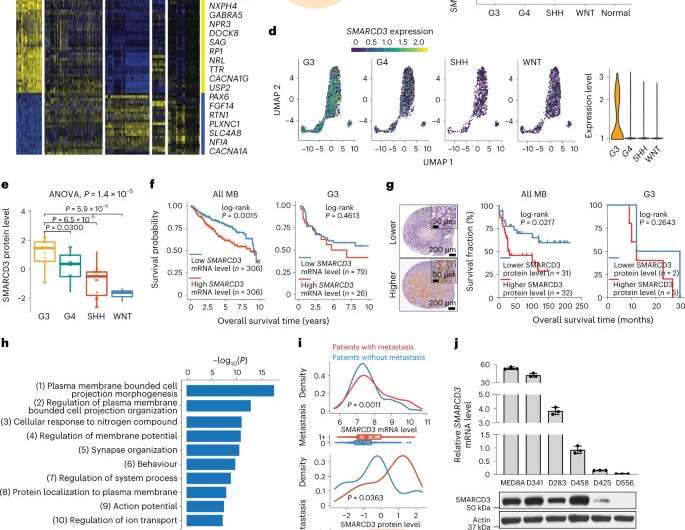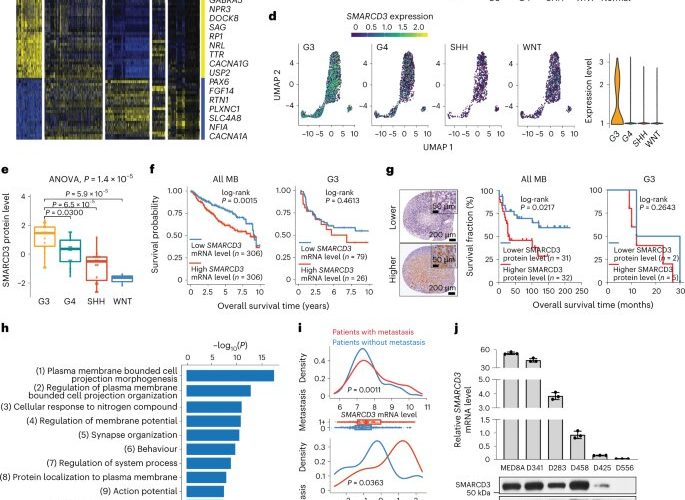New study uncovers key culprit behind pediatric brain cancer metastasis

New research pinpoints a key cause of metastasis from an aggressive form of brain cancer in children and provides a potential new therapy for treating these tumors in the future.
In a paper published in Nature Cell Biology, physician-scientists from the University of Pittsburgh and UPMC Children’s Hospital of Pittsburgh discovered that medulloblastomas hijack a skill that normal brain cells use during their early development and then manipulate it to help tumors spread.
“Children with medulloblastomas that have not yet metastasized may have a high likelihood of long-term survival, but if those tumors have spread, the survival rate is significantly reduced,” said senior author Baoli Hu, Ph.D., assistant professor of neurological surgery at Pitt. “Longstanding challenges that we face in the field include understanding how tumors are able to spread and how we can stop tumor metastasis.”
Brain tumors are the leading cause of cancer death in children. The most common malignant children’s brain tumor is medulloblastoma, which form in a region of the brain called the cerebellum, with about 500 new cases diagnosed in the U.S. each year. Medulloblastomas are commonly treated with surgery followed by radiation and chemotherapy, but in up to one-third of children, the tumor will metastasize, or spread out to tissues and organs beyond where the tumor originated. When tumor cells spread, treatments no longer work and the outcomes are grim.
To learn how medulloblastoma cells metastasize, Hu and his team leveraged patient and experimental mouse data. They found that levels of a gene called SMARCD3 were significantly higher in metastatic tumors compared to those that had not spread.
They also showed that SMARCD3 hijacks neurodevelopmental signaling pathways to promote tumor cell spreading. These pathways are used by healthy brain cells during early cerebellar development and are shut off when the cerebellum matures.
Next, the researchers targeted these pathways with a drug called dasatinib, which has been approved to treat leukemia in the clinic. In a mouse model of medullobastoma, dasatinib preferentially killed metastatic tumors with higher levels of SMARCD3, suggesting that the drug causes little or no harm to normal brain cells and could be safe for treating patients with medulloblastoma metastasis.
“We’ve been thinking of medulloblastoma metastasis from the perspective of neuroscience and understanding how abnormal brain development causes and influences brain tumors,” said Hu. “This approach helped us to pinpoint fundamental mechanisms of medulloblastoma metastasis, which will help us develop safe, effective and personalized treatments for children with this devastating brain cancer.”
More information:
Han Zou et al, A neurodevelopmental epigenetic programme mediated by SMARCD3–DAB1–Reelin signalling is hijacked to promote medulloblastoma metastasis, Nature Cell Biology (2023). DOI: 10.1038/s41556-023-01093-0
Journal information:
Nature Cell Biology
Source: Read Full Article
